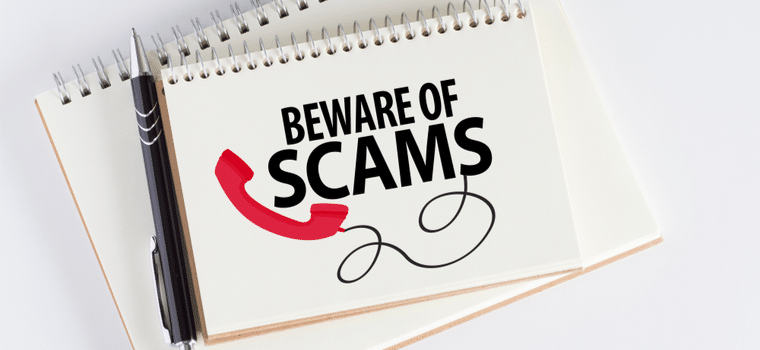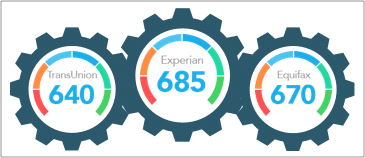Plenty of honest consumers use money orders every day. Scammers also use fake money orders to con merchandise and money out of unsuspecting members of the public. You can protect yourself from this type of financial fraud by verifying a money order’s authenticity, knowing how to spot red flags, reporting scams when they happen and using payment alternatives whenever possible.
How to Verify Money Orders
Because you probably know what a money order looks like, some scammers count on you only glancing at a money order when he or she gives one to you. The good news is that there are several ways to tell if a money order is real or fake. To avoid getting duped:
- Look for clear print quality, especially of small letters. Blurry print quality is one way to tell a fake money order from a real one.
- Confirm the presence of watermarks. Companies that sell money orders print them on special paper with watermarks. To find the watermark, hold the money order up to the light. For example, an authentic postal money order has a Benjamin Franklin watermark. Authentic money orders may have watermarks on the back or front.
- Check for non-printed elements. Authentic money orders have non-printed elements, like metallic strips added to the surface, and these indicate authenticity as well. Many fake money orders are produced on regular printers and don’t have non-print elements.
- Check the money order amount. Financial institutions impose limits on the sizes of the money orders they sell. For example, you can only send up to $1,000 on a domestic postal money order, up to $700 internationally and up to $500 to El Salvador. If someone sends you a money order that exceeds the amount set by the issuer, chances are it’s fake.
- Confirm the dollar amount location. Real money orders have the dollar amount printed in at least two spots on the face. Discoloration on any part of a money order is a tell-tale sign that the payment instrument is either fake or has been tampered with.
- Confirm the serial number with the issuer. If you suspect you’ve been given a fake money order, call the issuer to verify both the serial number and associated dollar amount before accepting it. The issuer’s contact information is usually posted on its website.
How to Spot Red Flags
As you examine a money order for physical authenticity, note the behavior of the person paying by money order. Some signs you might be dealing with a scammer include:
- Insistence on paying by money order. If the person wants to pay by money order and you ask them to pay using another method and they refuse, their money order might be fraudulent.
- Lack of interest in your product or service, only in paying for it by money order. If you’re selling a specialized product or service and the buyer doesn’t know anything about it, yet they want to buy it with a money order, you’re probably being scammed.
- Undue pressure to close the deal quickly. If someone puts pressure on you to cash a money order and give them the full amount or the difference fast, you might take a step back and refuse the transaction.
Types of Money Order Scams
There are several money order scams, many of which constantly change with emerging technologies and customer awareness. Some scams simply rely on old-fashioned social engineering and take advantage of our willingness to help others.
Common money order scams include:
- Payment in excess of the amount. Say you list your old laptop for sale online for $300 and someone buys it with a money order for $1,000. The buyer might ask you to kindly send them the balance of $700 along with your laptop. If you fall for this type of scam, you’ll lose your laptop, or worse, you’ll lose your laptop plus $700.
- Buyer’s remorse. Someone buys an item you’re selling, usually online, and before you receive the money order, they ask you to cancel the order. Your bank may cash the money order, which allows you to refund the buyer quickly. You find out later that the money order is fake and your account is overdrawn by the amount.
- Non-refundable rental deposit. A prospective tenant sends a property owner a money order for a non-refundable security deposit plus a couple of month’s rent. But then, they decide they don’t want the place and ask the property owner to refund the rent and keep the security deposit.
Again, the con artists count on the property owner cashing the money order fast to close the transaction without any issues. A variation of this money order deposit scam has been used on attorneys. - The kindness of a stranger with a bank account. Someone might approach you, asking you to cash a money order for them because they don’t have a bank account. To inspire you to help them, the person most likely will tell you a story that pulls on your heartstrings. The goal here is to get you to deposit the money order in your bank account and give them the cash.
Loss From Money Order Scams
It can take weeks for your bank to verify a money order’s authenticity. Here’s what could happen that could cause you to lose money while verification is taking place:
- You could lose expensive merchandise by sending it to a customer who paid with a fake money order.
- You might withdraw money your bank advances to you from the money order deposit and have to pay it back when the bank finds out the money order isn’t authentic.
If there’s no money in your bank account to cover the bank’s loss for clearing a fraudulent payment instrument, the money you withdrew becomes a loan. The bank may be sympathetic to the fact that you were defrauded and try to help you get to the bottom of what happened.
Reporting a Money Order Scam
Report fraudulent money orders to your bank immediately if they don’t find out before you do. Also, contact the business that issued the money order as well as the business that facilitated the transaction. For example, you might have met a fraudster passing fake money orders through Craigslist or eBay, so let those companies know, too.
Depending on the circumstances, you can also report the money order fraud to your local police department. For example, local law enforcement might get involved if you met a scammer locally.
Other state and federal agencies to which you can report this type of financial crime include:
- Your state’s attorney general
- The U.S. Postal Inspection Service
- The Federal Trade Commission
- The FBI
- The US Secret Service
Alternatives to Money Orders
Try to accept cash when doing business in person. If you have a small online business, payment services like Paypal, Google Pay, Apple Pay, and Amazon Payments, among many others, allow customers to pay you by a variety of verified payment methods. Online payment services deposit money into an account in your name. These types of services also provide a platform for you to settle refund requests properly.
Accounting software products also provide payment processing for users with plugins and credit card readers. These products allow you to accept payments safely from a laptop, smartphone or tablet.
Transacting With Money Orders Safely
Fake money orders can be very hard to spot even when you know what to look for. Always ask the person paying to use other payment methods first, especially when they’re strangers to you. If dealing with someone locally, verify the funds in their presence before accepting a money order. Lastly, what until funds have cleared from a money order deposit before using them. Taking these extra steps can help you avoid financial loss.




